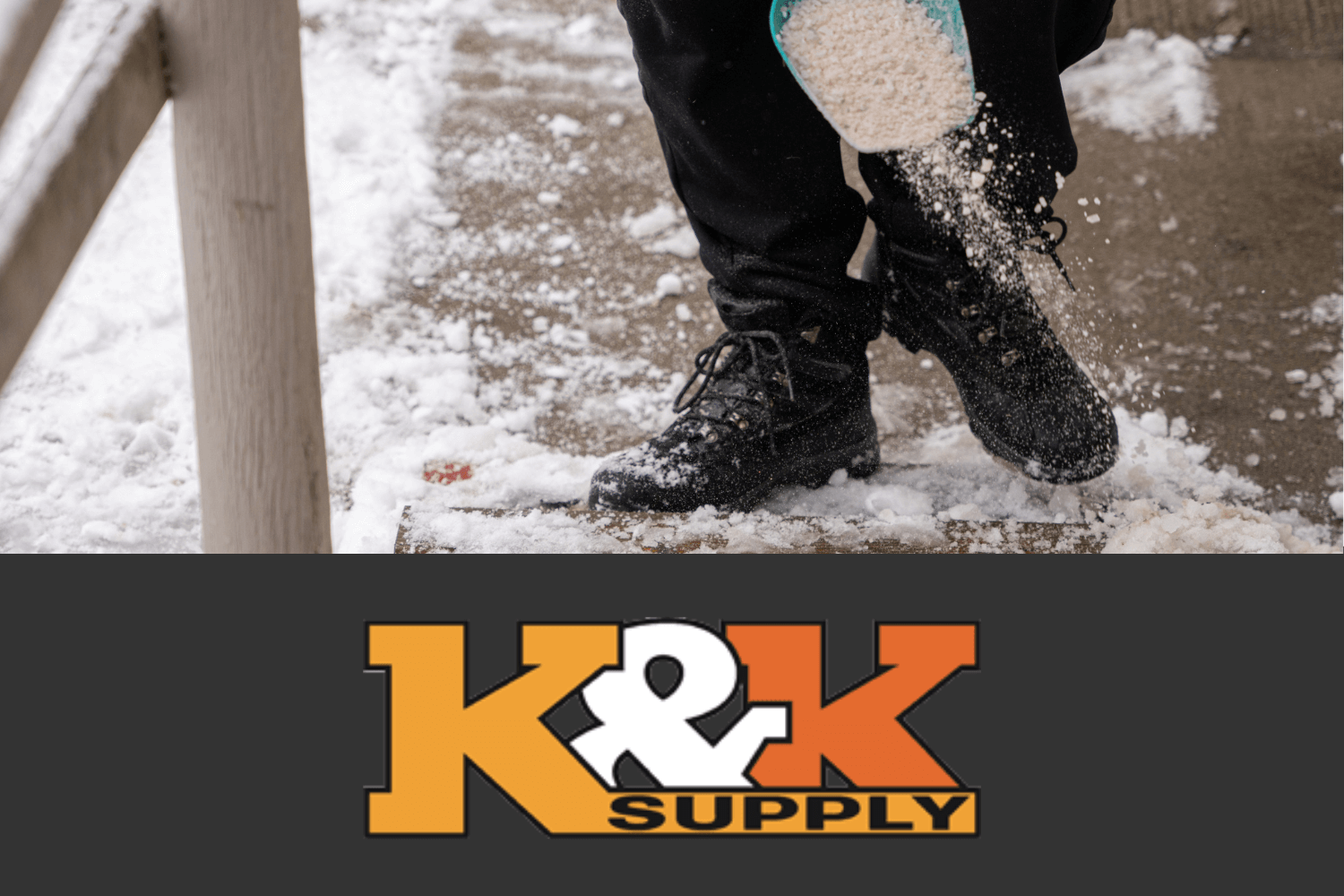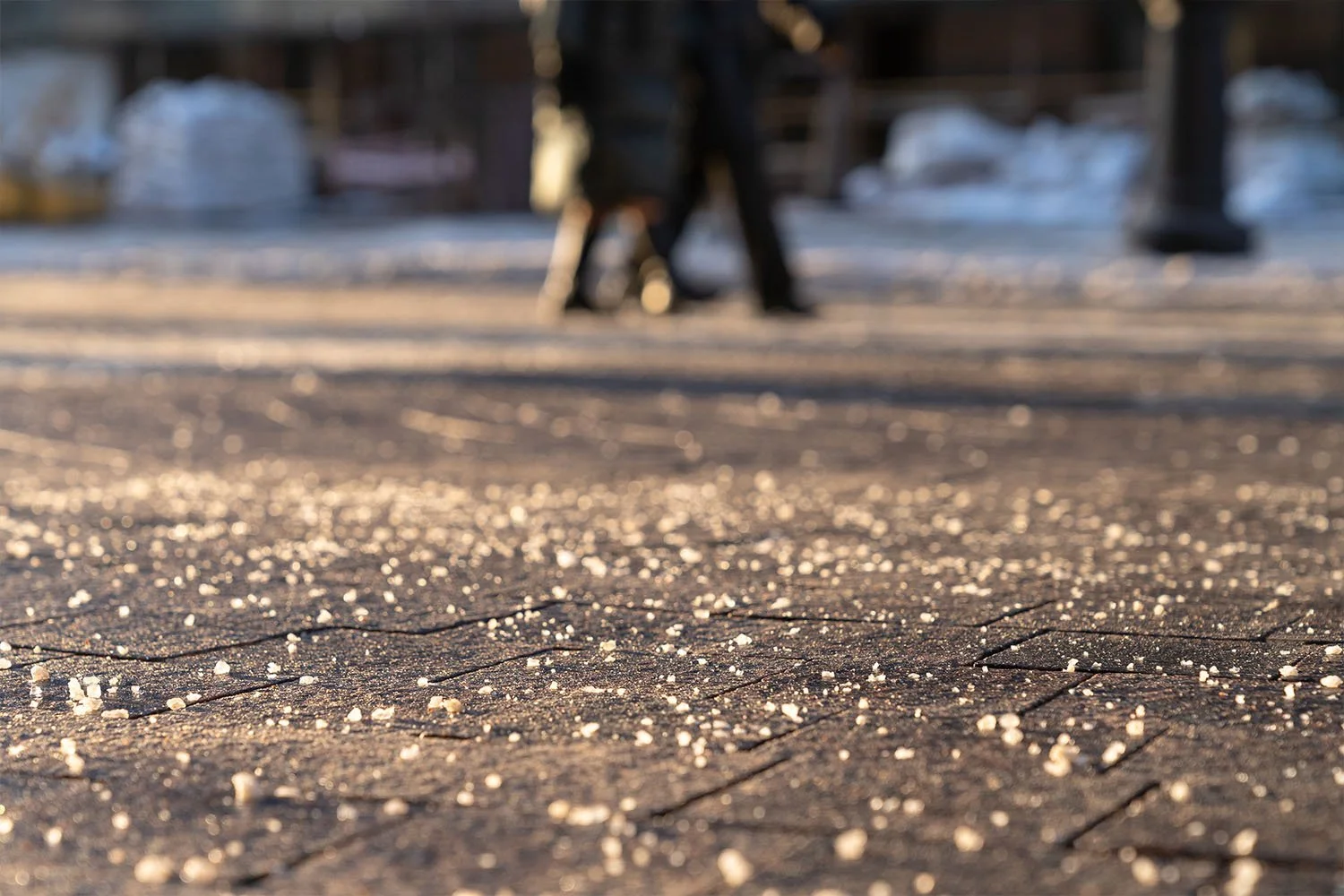How Rock Salt for Snow Ruins Concrete (Spoiler: The Solution is Beet Juice)
As the seasons change and the world around us begins to freeze, cities and homeowners turn to using rock salt for snow to reduce slipping and sliding.
The good news is, it works pretty well. A study found that deicing roads reduces accidents by 87%.
Americans use 24 million tons of road salt annually. This excess salt causes extensive damage to infrastructure, the environment, and personal property.
Rock salt is the cheapest ice melt option, but it loses its effectiveness when the temperature drops below 20°F.
Calcium Chloride works at colder temperatures and causes less damage, but is twice as expensive.
Thankfully, the solution to these problems has been growing just beneath the surface all along: Beets!
Yes, the root vegetable.
How using Rock Salt (Sodium Chloride) to Melt Snow Damages Concrete
Rock salt is an inexpensive and efficient way to lower the freezing temperature of water.
Water freezes at 32°F, but when mixed with the right amount of salt, a sodium chloride and water solution can stay liquid at temperatures as low as -6°F.
When you sprinkle salt on an icy patio, it dissolves into the thin, semi-liquid layer of water that sits on top of the ice. This kicks off a cycle of melting and dissolving that ideally results in a safe, slip-free patio.
The trouble begins when that freshly liquefied brine seeps into tiny pores in the concrete.
This is fine as long as the solution remains a liquid.
As we mentioned earlier, salt loses effectiveness once temperatures hit 20°F. After that point, it will start to refreeze.
When the water freezes inside the pores of the concrete, it expands by about 9%. If there’s not enough room within the concrete’s pore structure to house this expansion, the concrete cracks from the resulting tensile stress.
Inevitably, temperatures will fluctuate as winter progresses, this leads to a sequence of shrinking and expanding called the freeze-thaw cycle.
This repeated push and pull is the primary way rock salt damages concrete.
A patio that was once smooth and pristine, can end up pitted and cracked. This type of damage is called spalling.
If you’ve spent time, money, and energy building the perfectly stamped concrete patio, the last thing you want to do is add anything that will cause it to crack.
Sodium chloride can also chemically affect concrete. When rock salt dissolves, chloride ions can travel through the porous material and reach the steel reinforcement. At the right concentration, chloride corrodes steel.
When steel rusts, it expands. Just like with the ice, this expansion causes tensile stress on the concrete, leading to cracking and spalling.
How using Rock Salt for Snow can be Devastating for Plants, Pets, and the Environment
Concrete damage isn’t the only reason you want to rethink your deicing practices. Excessive use of salt can contaminate drinking water, poison pets, and kill plant life.
High sodium levels in drinking water can pose a risk for those with medical conditions such as high blood pressure, heart, kidney or liver disease.
Pets can ingest toxic doses of sodium by licking it off of their paws or fur. This can result in vomiting, lethargy, and in extreme cases, kidney damage.
Salt can absorb water in the soil, causing root dehydration for nearby plants. It can also displace nutrients, leading to disruptions in photosynthesis and other vital plant processes.
Finding ways to reduce the amount of salt used can make a big difference. That’s why it’s important to carefully consider rock salt alternatives.
But Why Not Calcium Chloride?
In many ways, Calcium Chloride is a better option than rock salt alone.
It’s less likely to damage your concrete because it’s working temperature goes all the way down to -25°F. That means a lower chance the ice it melts will refreeze.
It takes less product to get your ice melting, leading to less chlorides finding their way into soil and bodies of water.
The major downside? It can be more than twice as expensive as rock salt.
If only there was an affordable option that allowed us to use less product, and had a working temperature lower than -25°F!
An Unlikely Hero: Beet Juice
The sugar in beet juice has a similar ice melting effect to salt.
In fact, any material that dissolves in water can disrupt ice crystals from forming and cause ice to melt.
So why beet juice?
Just like with rock salt it’s about price and efficiency. Beet Juice is cheap and it works great.
Here at K&K we use an incredible product called Enviroheat. It’s made from an innovative mix of rock salt and beet juice
This sweet and salty combination works at temperatures as low as -30°F, so no worries about the freeze-thaw cycle causing damage to your driveway. It’s also 60-70% less corrosive than rock salt alone.
The product also boasts lower application rates, 400 square yards per 50 pound bag. So you’ll need a lot less to get the job done.
More beet juice means less sodium and chloride, which is great news for plants, animals, and water supplies.







